How strong is your bond with your horse? Take our quiz!!
Take our quiz and see what you might need to work on to improve the relationship you have with your horse.
What Strengthening Your Bond Will Do For Your Horse
Did you know that herd structure plays a big part in the way we should bond with our horse?
Have you ever wondered why horses are herd animals?
I wouldn’t be surprised if you really haven’t given it much thought. They just are - right?
Or perhaps you think “they are animals of prey, it makes sense to have the advantage of numbers”.
And in a sense, that is true. But a herd offers so much more.
The structure of the herd incorporates:
An alpha that expects discipline, provides security and that they trust.
An alpha that they can ‘test’ to ensure they are being lead by the best.
Herd mates that they share affection with.
Herd mates that share companionship and will play together.
When it comes to OUR interaction with our horse, we need to spend time intergrating ourselves into a similar position of the alpha horse in the herd. By doing so, we can set ourselves the easier task of training and working with a horse that respects us, trusts us and will share affection and connection.
So what are the areas we work on with our bond?
Boundaries:
By establishing boundaries, we can reinforce manners and respect with our horse. And we don’t need to beat them back or bully them into submission to do so.
Affection:
Have you ever watched to paddock mates mutually grooming? Not only is it cute, it has the benefit of reconnecting and re-establishing bond through affection. We love our horses and want them to love us back, so when we practice exercises that encourage affection, our bond strengthens infinitely.
Adventure:
Taking a break from the regular work routine or home routine to take an adventure together is not only a lot of fun, but a great way to reinforce our leadership and to create a level of trust founded on the confidence that your horse knows you will help them process stimuli and keep them from danger.
Companionship:
Spending some time with your horse without expectations is an exercise that actually has a bigger impact on ourselves but still a large impact on your horse. It is also a great assessment of your horse’s expectations from you - their reaction to your presence in the paddock will point you in the direction of what needs more work.
Security:
We (should already be, I hope) providing the basic security for our horses physical well-being, but sometimes we neglect the emotional security. By taking the opportunity to support our horse through these times of emotional crisis, we result in a higher level of trust, more affection, and an extremely strong bond.
Developing A Bond With Your Horse
Is this your goal?
We recently hosted a free workshop in our Facebook group with exercises that helped to develop a stronger bond with our horses.
To be honest, I was surprised by the number of people that joined because they wanted a stronger bond with their horse (which I’m stoked about). I was expecting people to join the workshop wanting to fix certain problems they were having with their horses.
And it got me thinking: I have my understanding of what I want in a bond and a relationship - but what do others expect?
What is a bond?
A bond is stronger than just liking someone. But we do have to start there. We have to like our horses and they have to like us. Liking each other, enjoying each others company and wanting to spend time together fosters an environment where a bond and a relationship can be born.
A bond with another is built on social connection and nurturing the emotional needs of the individuals. These emotions include trust, affection, gratitude and love amongst others. As we build trust and feel safe that they won’t hurt us, we break down our emotional boundaries. The trust and social connection established in a bond make us feel valued, loved and cared for.
Training and developing a relationship or a bond go hand in hand whilst also being polar opposites. You can have a trained, well behaved horse without nurturing their emotional needs, and you can have a relationship without our horse being educated and responding correctly to our asks. Training, our goals and our expectations can easily damage our relationship and bond with our horses if we aren’t respectful of our horses’ emotional needs.
Asking our horse to do something that is scary or putting them in a situation that they may get hurt.
Not listening to them when they say “I’m overwhelmed”, “I’m scared”, “I need a break”.
Using force to get what we want from them even if why we are getting it is because they don’t understand or can’t do.
Expecting them to bring their ‘A’ game every ride and be better than their last even when we aren’t as riders.
All these things can damage our relationship with our horse and create undesirable behaviours in our horse or lead them to shutting us out and just performing the task asked without enjoying it.
As easy as it is to breakdown this relationship, it’s just as hard to build a strong healthy relationship and bond. A bond is created through times of difficulty or hardship. Have you ever had a horse that you have nurtured while sick or injured and noticed after they recovered that the relationship had strengthened? Being able to guide a horse through a difficult experience safely so that it becomes a positive experiences helps us to show up as leaders and our horses to learn to trust us. The other way is just spending time together and offering a company.
This is why the workshop was based on small, easy to implement exercises done consistently. This is why we harp on having the same expectations of our horse every time we handle them, no matter how time poor we are. So that when we put them in more challenging exercises or experiences they trust us and know what is expected on them. We stop feeling like we could have done more on a positive note without overfacing them. Because each interaction with our horse is first to build this trust, relationship and bond and then secondly to work towards our goals.
If you want to join us for our next workshop, make sure you are on our email list by signing up below!
Establish Yourself As A Good Leader
Are you a good leader for your horse?
What makes a good leader?
A good leader is someone we trust, that makes us feel good and that we want to follow, even when we are scared.
It's the same for our horses. Establishing yourself as a good leader is important to give your horse the confidence to follow our directions, even when life seem scary ("that rock looks dodgy to me!").
The best way to establish yourself as a good leader, is to show your leadership skills through difficult and scary situations. The situations that are scary for the horse are not normally too scary for us, so showing how to confidently get past these ‘scary’ obstacles can give the horse confidence in our leadership skills.
It is important to maintain calm relaxation while your horse is nervous to show them how to manage themselves emotionally. (Not sure how to remain calm when your horse's temperament has hit the metaphorical ceiling? Breathe!)
Teach your horse how to investigate scary objects. Desensitising them is a good option but you have to keep desensitising them to everything they find scary. Teaching them how to investigate and accept things they are unsure of can make it easier long term.
Again, the horses learn from the release of pressure not the application. Assess the situation. What is creating pressure. Pressure can be physical, mental and emotional.
Learn how leadership is one of the important foundations to training and riding your horse
Click hereIn the situation of the horse investigating an object it is scared of there is the emotional pressure of fear of the object AND physical pressure of the cue you are using to take them over to it. If you are maintaining the physical pressure when the horse steps toward the emotional pressure, the release of pressure is away from the scary object. For each movement toward the scary object there needs to be a release of the physical pressure and for each movement away from the object there needs to be an increase in physical pressure. Stay calm, be confident and encouraging, use your voice and give positive reinforcement. Make much of a fuss of your horse when they do the right thing, so they seek that feeling of doing well.
The feeling of doing something well releases endorphins and makes us feel good.
And that, my friends, is how we show our horses we are good leaders.
7 Ways You Can Destroy Your Relationship With Your Horse
Are you doing one of these?
1. All work and no plays makes Jack a dull boy
Hopefully, we will not be witnessing another event like that in The Shining, but it is an accurate statement nonetheless.
If all we do with our horse is the basic care routine and work, we miss the opportunities to create bonds based on affection. In affect, we become boring, with our horses become bored with our routine,- to the point they may try to avoid it altogether.
2. Allowing your horse to set the rules
A horse that has to step up as the alpha when they are with us results in the loss of respect for us. Politely reinforcing discipline through our activities will allow us to identify and settle leadership challenges.
3. Not releasing the pressure
Have you ever had someone keep pushing and pushing and pushing til you want to scream “enough”? Our horses learn to seek release from our aids (pressure), but get easily confused and frustrated when we don’t apply the release correctly or at all.
4. Hurting, bullying or scaring our horse
It may seem logical, but it is still done these days. A horse will not bond with you and become your willing work partner if you hurt it or chase it around the yard with a flag on a stick. They may eventually learn to obey you, but they never become your partner, only your tool. These types of horses may become dangerous and eventually euthanased.
5. Letting them deal with their own emotional crisis
In this case, we are talking about sudden causes of anxiety, not social interactions.
When your horse is faced with something terrifying, and we step up as the leader to show them how to work through those emotions, we take the opportunity to prove ourselves to our horse. If we leave it to our horses how best to figure it out, well, most of the time they way they deal isn’t the way we want them to.
6. Pushing the pace too fast - or too slow
Our horses are all uniquely different, in shape, size, colour but also personality and learning capabilities. This means that we cannot expect our horses to all grow and develop in the same way.
When we force our horses to try to learn something new too fast, we create stress and anxiety that is not conducive to stabilising our relationship. If we go to slow, we may create frustrations. It is key that we adjust our training pace and activities to each of our horses development.
7. Neglecting to properly fit tack or address pain issues
Pain is an unpleasant experience that many of our horses experience at one time or another. When we are the cause of that pain, either via using poorly fitted tack, or working their body incorrectly, or even working them when they have a brewing hoof abscess, our horses begin to associate us with the pain - and believe me, that is not a positive bonding thought.
Do you need support with your relationship?
How To Identify If Your Relationship With Your Horse Needs Improving
What are the signs that mean you need to work on your bond?
You love your horse. right?
We know you do - it is why we are here, too!
But does your horse love & respect you back?
It may seem a fickle question, but it is one that we should ask.
Our relationship with our horse has a massive impact on our training. And our training has a massive impact on our relationship. Every form of interaction determines what you can expect from your horse in turn.
So, what are the signs you should be looking for that indicate you need to work on your relationship with your horse?
You are regularly frustrated with your horse - or yourself
You try your best, your work yourself and your horse hard, but you just don’t seem to be getting anywhere. Yep, you are feeling the very beginnings of frustration.
Unfortunately, frustration can lead to feelings of irritation, distance or just a lack of appreciation. And don’t think for a moment that your horse isn’t feeling those emotions from you.
If you are getting frustrated or irritated, it is time to step back and focus on the real reason you are here - to love and be loved by that majestic beast in your paddock.
Your horse is “pushy”
Is you horse disrespectful of your personal space? Do they almost step on you when you lead them, or mow you down when you let them out?
Or perhaps they are becoming aggressive and pushy at feed time, knowing that you will hand them their food immediately should they push.
A horse that is not respecting your boundaries may be testing you, but if you are seeing this happen frequently, it’s time to get your horse focusing on respecting you.
Your horse spooks - a lot
It can be scary, frustrating or just plain irritating when our horse regularly spooks. But it is our responsibility, as the leader of your horse-y group, to ensure your horse is confident, relaxed and curious. If you horse is spooking, it is unlikely that it is feeling any of those moods, and means you need to work on your relationship foundations.
You only see your horse at feed-time and for work
Imagine this: You get to see your significant other/best friend/favourite sibling every day for dinner but the only thing you get to do discuss is a business meeting. No “what are we doing this weekend”, “how was your day” or “where shall we take our next holiday”. Just budgets, margin, profits or sales.
It might be ok for a day or two, but would get pretty stale in a short time.
It is exactly the same for our horses when we do nothing more besides work them or feed them. They quickly associate their activity with us with either feeding (YAY!) or work (not always so yay). After a while, they will even get to know your routine, and may start taking diversionary tactics to avoid less ‘pleasant’ time with us.
You’re not ‘in the moment’ with your horse
If you find yourself going through a mental checklist of to-do’s, or constantly worrying about something else, when you are spending time with your horse, chances are you need to refocus on your relationship.
We understand that life is busy and full of stresses, but when you focus on anything but your horse, you are not helping your bond. Unfortunately, our horses can pick up on these sentiments as well, which may exasperate the rift in your bond as well.
So how can we improve or tweak our relationship with our horse? Have a look at this free online course Building Connection
Identifying & Rectify the Emotional Stability of Your Horse
Is your horse stressed or happy? What can you do to make them happy and safe?
You need to breath… and so does your horse!
Holding your breath isn’t a cessation of breathing but a tension that comes about due to fear or stress that constricts the muscles around the rib cage, making breathing naturally and deeply difficult.
Noticing your horse is holding its breath is your first indication that it is not at ease with you and its environment. For this type of horse generally, if something changes in their environment, such as a loud noise, a tree branch falling, a bird fly into the air close by, it will likely switch them into flight mode.
The flight response or stress response is a complicated sequence of hormones that are triggered for self preservation from an environmental threat which, in the wild, would be a predator. Different areas of the brain work together to perceive the threat (amygdala) and to recognise and alert of potential threats from previous learnt experiences (hippocampus). Healthy development of certain parts of the brain (prefrontal cortex) help to quiet the part of the brain that is alerting the body of a potential threat.
Studies are coming to the forefront that show that chronic ongoing stress and fear at an early age affects the development of the prefrontal cortex that buffers the stress response and has long term repercussions of the architecture of the brain as an adult.
This to me highlights the responsibility we need to show for the safe and calm learning environment when breaking a horse for their long term mental stability and ability to calmly process stimuli safely. The use of fear based, bullying tactics should be left behind as we continue to develop our horse training skills.
So what has been determined to help process stimuli calmly and safely?
Social support and breathing.
One study was done on children where a stressful stimuli was put in front of them in the form of angry faces. (From previous studies we know that horses can interpret mood and emotion from our body language and facial expression). When the mother was present there was less activation of the part of the brain that perceived the threat and more activation of the area of the brain which controls our emotional responses to stress (prefrontal cortex) so we don’t get too stressed out. This is called social buffering.
This relationship between the two areas of the brain doesn’t become well established until maturity and adulthood. This has the potential to affect the horses emotional and mental stability when weaned too young and can train in a pathway of reaction to stimuli before we even look at introducing training.
This also highlights the importance of showing up in our horses life especially if they are younger (and when I’m saying younger I mean under 10) as consistent support that they trust because we are offering that “social buffering” for them. Taking away the intensity of the threat so that they can process their environment more calmly.
This social buffering also occurs in relationships with our partners and what could also be called a “bond”. If we are or our horse is in a group we/they know and a familiar environment, we/they cope with stress much better than if they experienced the same stress alone. This is crucial to note when we are in the “getting to know you” phase of a new horse, settling them in to their new environment and routine and getting to know their new paddock mates. Its generally not until a couple of months later that the true personality of the horse starts to come out and they start testing boundaries as they get comfortable with you and their new environment.
This social buffering I notice time and again with my students that have taken time to spend with their horses. One of our first recommendations when getting a new horse is to spend time just handling and being around them without trying to ride them. The affect this has on their level of alertness and tension is huge!
It doesn’t happen overnight. Think of any relationship you’ve ever had - it takes years to forge. Ideally we are trying to avoid tripping up that cascade of hormones and neural pathways into a flight state by making our horses feel safe because they are with us. Then when they let go of their stress and tension they can breathe deeply again and we know they feel safe and confident in us and their environment.
When I was competing I would train my horses to breath with me. I would sit and take deep breaths until they took a deep breath and then I would pat them to reinforce the behaviour. I would get it so that we could enter the arena and halt salute and while I was at the halt I would take a deep breath and so would my horse. We could then slow our respiratory rate and heart rate and focus our heightened energy and nerves into our performance together making for a smoother test with less errors and better flow.
I also use this with horses I don’t know, often getting it on the ground first and when I’m backing horses. Helping and showing a horse how to process their emotions, their frustration, anxiety and tension is about 70% of getting horses to work with us in partnership.
Social Buffering
Some exercise to improve your bond and create social buffering
Our walk, halt, back up exercises.
Sitting in the paddock with them while they graze.
Guiding them confidently through situations that make them nervous.
Spending time grooming them.
Feeding them.
Patting them.
Using encouraging and positive tones, body language and facial expressions.
Becoming aware of when they hold their breath and develop tension is key. So spending time just watching them and noticing how they look when they are relaxed and how they hold themselves during a perceived threat. Where this gets tricky is when they’ve learnt to shut down. (Read about what a horse that is shut down is like here).
Breathing exercises to practice around your horse.
Breathe in and as you breathe out force the air slowly between your teeth, this engages your diaphragm and encourages you to breath deeply.
Breathe in for 7, hold for 5 and out for 5. This is also a good exercise if you’re nervous as it resets your respiratory rate.
Breathe in for 10 and out for 10
When you are doing these exercises ask them to stand beside you and not eat. When they take a deep breath give them a pat and let them eat. If you’ve been doing it for a while and they haven’t taken a deep breath take them for a walk and try again.
We can rarely begin to comprehend and understand what our horses have experienced in their life. Often by the time I see them they are damaged and broken by their experiences with people.
When we don’t know the history of our horses
My students ask me why does my horse ...? And mostly I can’t say exactly why, I can’t read their mind and see what they’ve experienced that has shaped their coping mechanism that way.
The best I can say is that there is hope; we can recondition their responses to stimuli. But it does take time and patience and as always prevention is better than cure. This is the main reason I prefer to take the time with horses to training their trainability, to help them cope with their big emotions and to create a positive and encouraging learning environment with clear, will established boundaries.
What if your horse doesn't want you to ride?
Have you ever wondered what your horse is trying to tell you when they are:
Bucking
Rearing
Bolting
Flinching
Tail swishing
Stomping
Ears pinned
Swinging their heads at you as the girth gets done up
Kicking their belly
Running away when you try to catch them
Are they sore? Do their teeth need doing? Is their tack ill fitting?
All of these questions are very valid and must be ruled out but I’m about to give you the one answer you don’t want to hear.
You’re horse doesn’t want you to ride it.
Oh no!! Shock, horror!! How dare I say that!?! Surely every horse should be filled with gratitude and happiness at the very idea of you riding it!?! No they do not.
Need support getting started on helping your horse love riding again? Click here for the free mini-training!
Your horse wants 3 things from you:
1. Stop jabbing it in the belly with your legs and pulling it in the mouth with your hands.
2. Stop making it work
3. Get off, feed it, scratch its butt, give it some treats.
This is a very hard realisation to come to as a horse rider because it now puts our beautiful companion - the one that makes our heart sing to be on its back, galloping off into the sunset with the wind blowing in our hair - at the level of slave. They have to do this because we say so.
And this brings up some strong feelings of guilt and shame that our pleasure is at the expense of another animal (well, hopefully that comes up for you). This came up for me when I figured this one out for myself.
After ruling out all the issues my horse possibly could have it came down to the last variable, ME. And it floored me. As a professional instructor and trainer, how could I possibly continue working in this industry with the idea that I was creating slaves for our happiness? This was a tough one, and for a while the main thing that kept me going was that just because I quit wouldn’t mean that industry abuse would stop or that people would stop riding. It would just mean that I had given up doing what I love.
To get the right answer you have to ask the right question.
So the question changed.
If I were to not quit but instead continue riding and advocating riding as a sport and hobby, how could I do this in a way that would get the horse to want to be ridden?
Which left me with 3 principles that has founded the rest of my training.
1. Create a relationship with your horse SO THAT it enjoys your company
2. Make the education process and learning fun and engaging SO THAT the horse wants to learn
3. Make movement feel good SO THAT they want to move and train.
This is not something magical that happens over night. It means consistently showing up for your horse every day, advocating for the life it deserves, being aware of its wants and needs are and only putting just enough pressure on them that they can grow and flourish.
In the short term this takes time and patience. But its well worth it for the gifts our horses give us.
This is our horses gift to us:
Don’t worry about the time it will pass anyway (and what better way to spend it than with our horses)
Don’t become emotionally engaged in the results, instead use the results to learn from the experience
Have trust and faith in the process that you and your horse are exactly where you need to be in this moment, and you don’t always get what you want but you do always get what you need.
Just breath.
With these gifts the horse has given us we get to meet the person inside of us that is happy, at peace and ease with themselves and their lives who knows what it feels like for their heart to sing with glee. You know this person, you’ve met them before, it’s why you are a horse rider, it’s because you know that’s where you can find this person inside you. This person is the best version of yourself and when they come out in the saddle your horses heart also sings and you can make beautiful music together that is a pleasure to watch. Anything else is a bonus.
If you want this experience PLUS the acknowledgement of your peers and judges that you are a good rider we can get you that too. After all the training scale that dressage is based on IS the exercises that your horse needs for moving to feel good.
Need help getting your horse to love riding again? Check out this free mini training, available now!
17 Easy Exercises to Develop a Bond With Your Horse
Establishing a bond with your horse is a lengthy and complex process. Here are some exercises and activities that can help you do just that.
Establishing a bond with your horse is a lengthy and complex process. Here are some exercises and activities that can help you do just that.
Exercises to establish respect and discipline
1. When you walk they walk. When you stop they stop.
2. Backing up
3. Inviting them in and sending them away
4. Moving away from pressure – forward, sideways, backwards
5. Giving to pressure - flexing
6. Sending them away from their food when you feed them
These exercises (except the feeding) are the first things I will do with an unknown horse and commonly called groundwork. Before I hop on a horse I want to know how the horse reacts to pressure, how far the horse can be pushed before he/she reacts, how the horse reacts, how the horse shows his/her discomfort before he/she has a hissy fit and how to settle him/her from there. I want to see how he/she moves, if there is any stiffness, irregularity or strain in the movement and if me sitting on them is going to antagonise this. I want to know how well he/she takes to being bossed around and what he/she will do when they are. This can generally give me a fairly good idea of their personality within the first half hour of working with them. It also gives me a good idea of where to start with the exercises.
These exercises are also the basis of a good horse that shows discipline and manners, similar to a child saying please and thank. A mindful horse should follow when you walk, not walk over the top of you when you stop, back away from you and out of your space when asked and step into your space when invited. They should give to pressure and react to a cue when asked. If these qualities are established on the ground it is a lot easier to create them under saddle.
Exercises to establish a rapport
7. Take them for lead line walks.
8. Grooming
9. Appreciate your horses individuality and its little behavioural quirks it uses to communicate.
10. Wander around the paddock with them while they are grazing. Leave little treats around the paddock for them to find. Take a book and a chair out and sit with them while they graze.
11. Show affection toward your horse and feel affection toward your horse. This may sound strange but our horses work best if we are present with them. If we are thinking about other things going on outside that environment or at home or other aspects of our life we lose that connection with our horse. Stay present with them, breath them in, feel them and let your heart expand.
12. Be grateful for each and every moment you have with your horse.
Exercises to calm and relax
13. Breathing. Breath in for 7 hold for 7 out for 5. Reset your heart rate and breathing rate.
Take responsibility for your energetic state. It can be helpful to do some meditation tutorials. Your energy feeds your horses energy. If your energy raises out of fear or excitement your horses will as well. Horses work in a herd mentality ready to run at a moments notice. As soon as they feel the horses around them become more alert and less relaxed they will be ready to run. This is what they feel from you when you are tense and alert. They don’t realise its their behavior making you nervous, they are ready for the predator to jump out of the bushes and eat them. If you want your horse to be relaxed, you need to channel your inner grazing horse. A horse with its head down eating is a relaxed horse, it is not threatened and feels safe.
14. Give your horse a massage with a tennis ball. Horses love a good massage and using a tennis ball is the easiest way for anyone who has no particular training in massage. It can loosen and soften the tension out of their body and help them feel calm and relaxed and enjoy your company.
Some final notes
15. Work together through the learning phase:
learning
trying everything other than what you want
acceptance
16. Communication is a 2 way street
If you want your horse to be kind and appreciative, you need to be kind and appreciative. When your horse reaches out to you appreciate and reciprocate. Touching their nose to you, physical contact, other ways your horse tries to connect with you. Show that you are aware, or they will stop.
17. But above all be fair, be firm and be consistent.
Developing a Bond with your Horse
Are you trying to improve your relationship with your horse but don't know where to start?
Katie shares some insight into the development of the bond between horse and owner.
Are you trying to improve your relationship with your horse but don’t know where to start?
A bond with a horse is as intricate and fickle as a relationship with any other person in your life. There are many aspects to take into consideration. You need to take responsibility for your role in the relationship and not allow your emotions and hang ups to dictate your behaviour.
A certain amount of education is required to be able to read the horses’ body language and communicate effectively with yours. As a beginner around horses you are in grade 1, learning the alphabet and how to construct a sentence so the horse understands what you are saying. As you develop your skills you start to read what the horse means when it stomps its feet, swishes its tail, tosses its head and flickers its ears. This is how horses communicate. They use their body language similar to sign language because they cannot verbalise their thoughts.
It is our job to interpret what these signs mean and give the appropriate responses. The horse will watch us and how we respond to their behaviour. They are much better at picking up these signals than we can ever hope to be. The clever ones will even test our consistency in our own behaviour.
“Ginger is a 16 month old filly I recently introduced myself to. She had just started testing her boundaries and establishing her independence. When people approached her she would snake her head and swing her hindquarters to you. Not knowing this was inappropriate behaviour, the owners hadn’t picked up on in it and weren’t correcting it. These were the first 2 things I wanted to address. I wanted to be able to invite her in to me but also send her away if need be and create some space between us. When I approached her, or even if she approached me out of curiosity she’d snake her head at me. During our first lesson together we were just getting to know each other and test boundaries. I wanted to see how deeply this behaviour was established and she wanted me to leave her alone so she could go back to the other horses. Once she established that I wanted her to come in to me, she started testing the cue that I was giving her to ask her in. She would deliberately turn her head away from me and run around me acting out and then turn in to me, testing how I responded to each thing she did. I had to be careful to read her body and position myself safely around her, make sure the timing and the application of my cues were perfect but more importantly there was the release of pressure and positive reinforcement at the appropriate times. She walked out of this lesson quietly, confidently and calmly at my side. She had worked me through my paces and was happy for me to take the lead.”
A bond is dynamic, and continues to evolve over a lifetime
If we don’t acknowledge these signals the horse starts to feel confused, frustrated and misunderstood. The horses’ signals get louder, as if shouting, and can escalate to inappropriate behaviour such as biting or kicking.
There are many reasons why a relationship can turn sour.
There’s no connection between you and the horse
The horse feels misunderstand or unappreciated
The horse doesn’t enjoy the time it spends with you
The horse has no respect for you
The horse lacks education.
Educated horses are a catch 22. Green horses still exhibit more horsey behaviour because they haven’t had the years of handling to understand what is expected of them. They only know how to behave like a horse, however they can be more interested learning process. An educated horse that has decided it is smarter and more cunning than its owner can be more dangerous than a green broken horse. It knows the tricks of the trade, understands how to bluff its way out of work and can manipulate the rider’s behaviour to get what it wants, which in most cases is to finish riding and get turned out and fed.
As with any relationship there’s a fine line between establishing clear boundaries and behavioural expectations and being able to relax and be yourself around them:
You need to listen to their communication and make them feel like you are trying to understand.
You need to prove yourself as a good leader if you want them to take direction from you.
You need to spend time with them where there is no expectations and enjoy each others presence.
You need to share yourself with your horse, let it feel you as you feel it, be happy in its presence and in the moment, feel love, gratitude and appreciation for them and allow them to show it in return.
A bond isn’t something that’s developed in a day, a week, a month or even a year. It is dynamic and continues to evolve over a lifetime. Each experience, each training session, each feed, each groom, each show, each trail, each moment of utter defeat and every epiphany shapes and develops the bond between you and your horse. What you have today won’t be the same in a month, in a year, in 3 years. You need to experience the depths of your existence and who you are as a person with your horse as your guide if you are truly looking for a meaningful bond.
Looking for more specific content?
Have a question you are seeking answers to? Send us a message and we will create a blog!





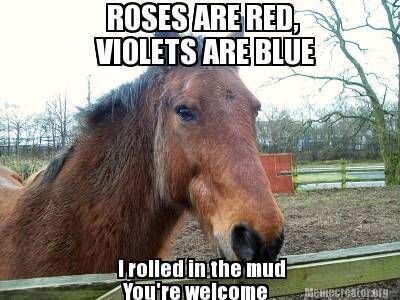





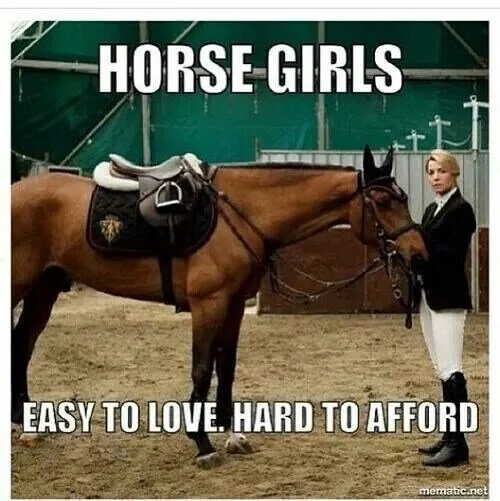





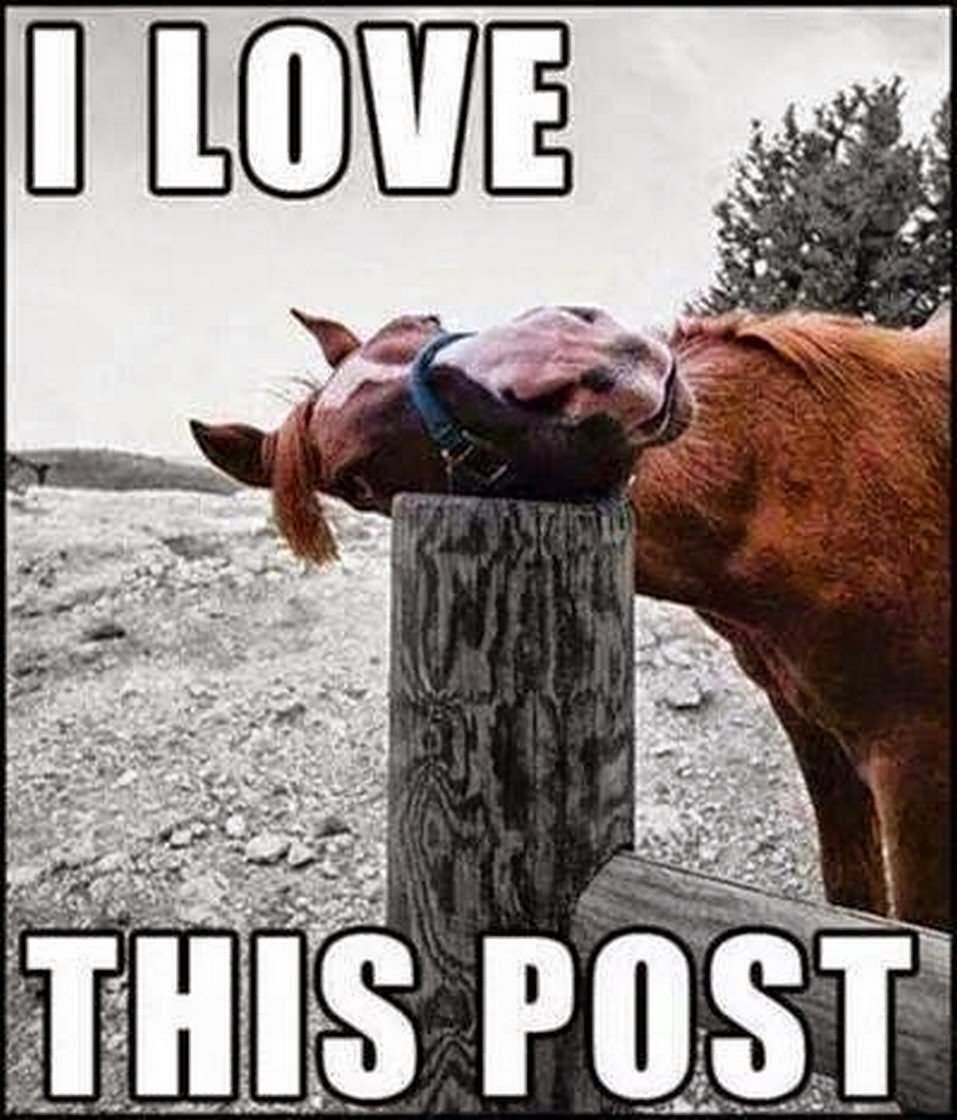


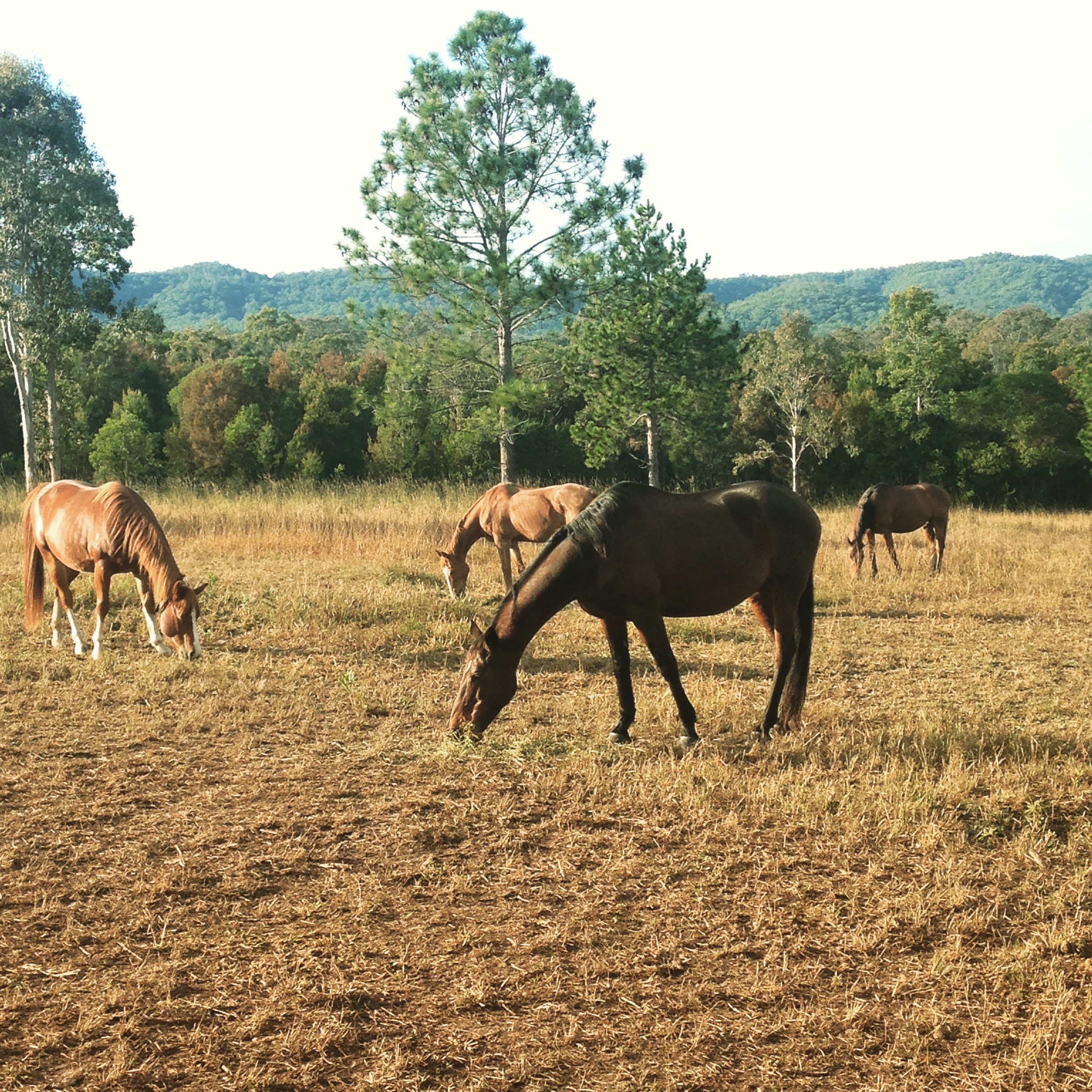
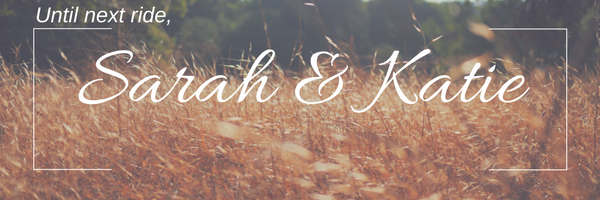



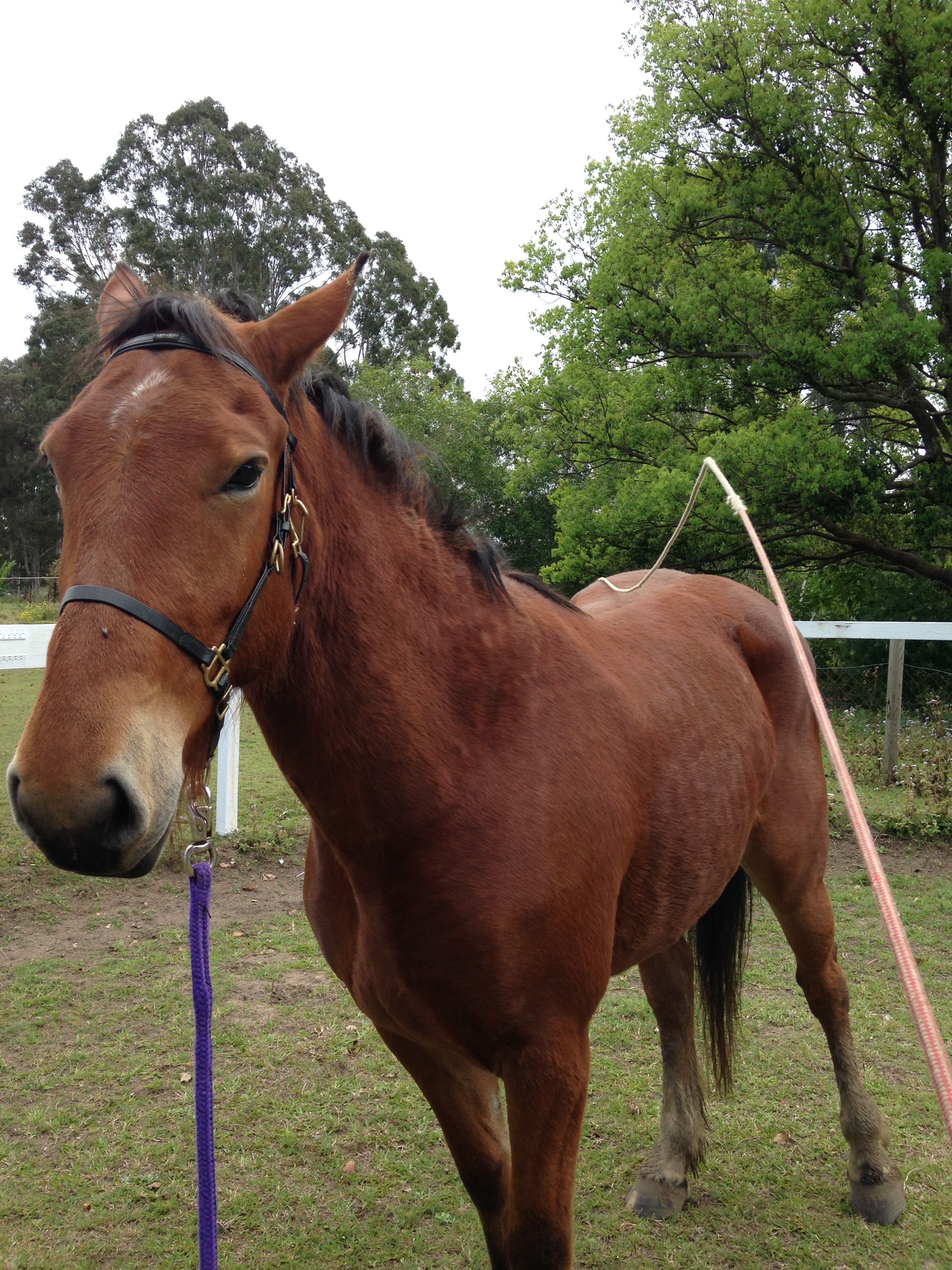
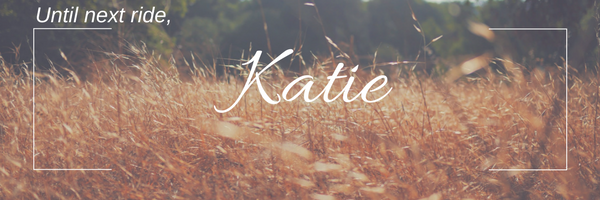













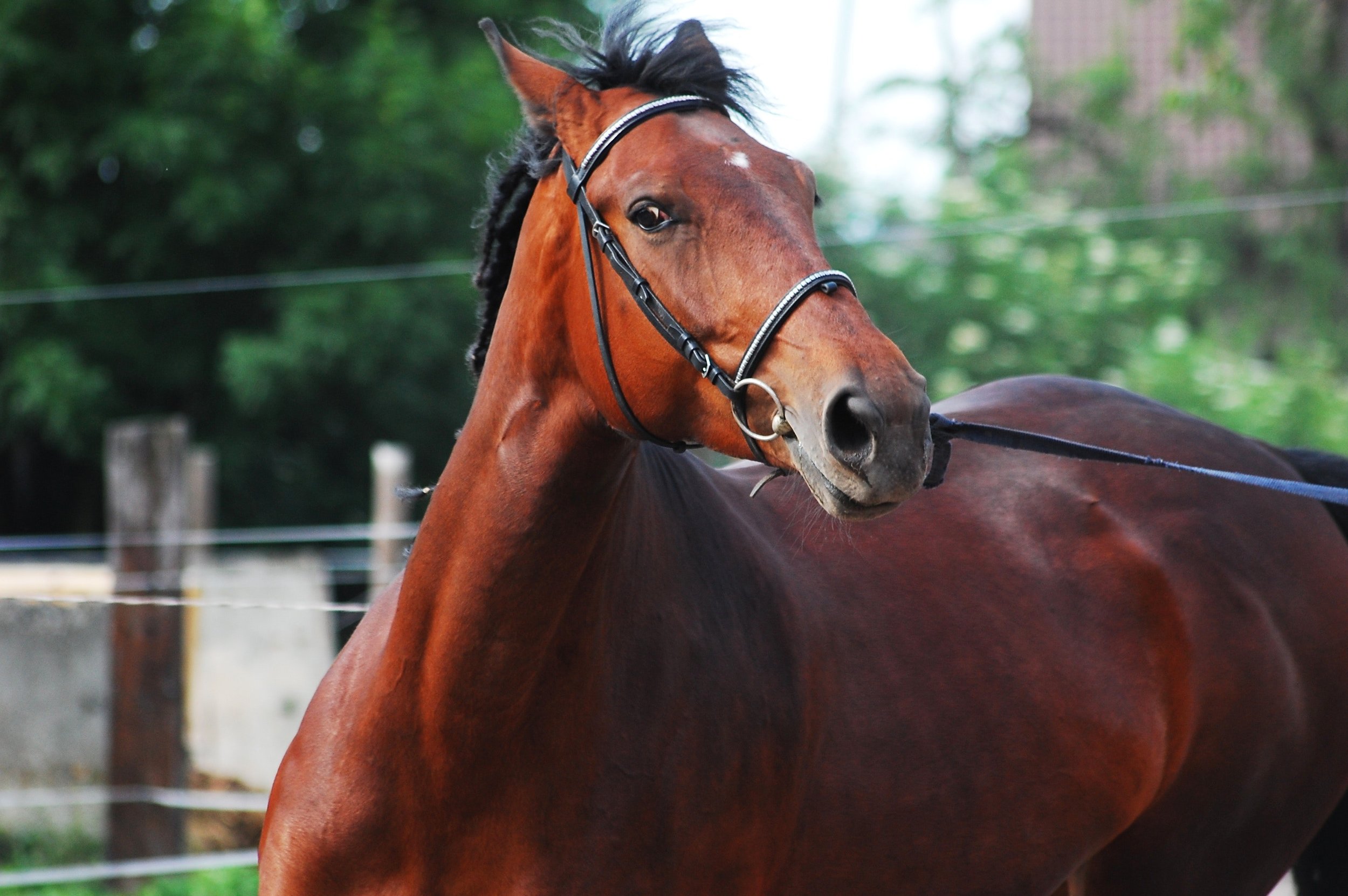










Explore the process of building a deeper connection with your horse in this free course